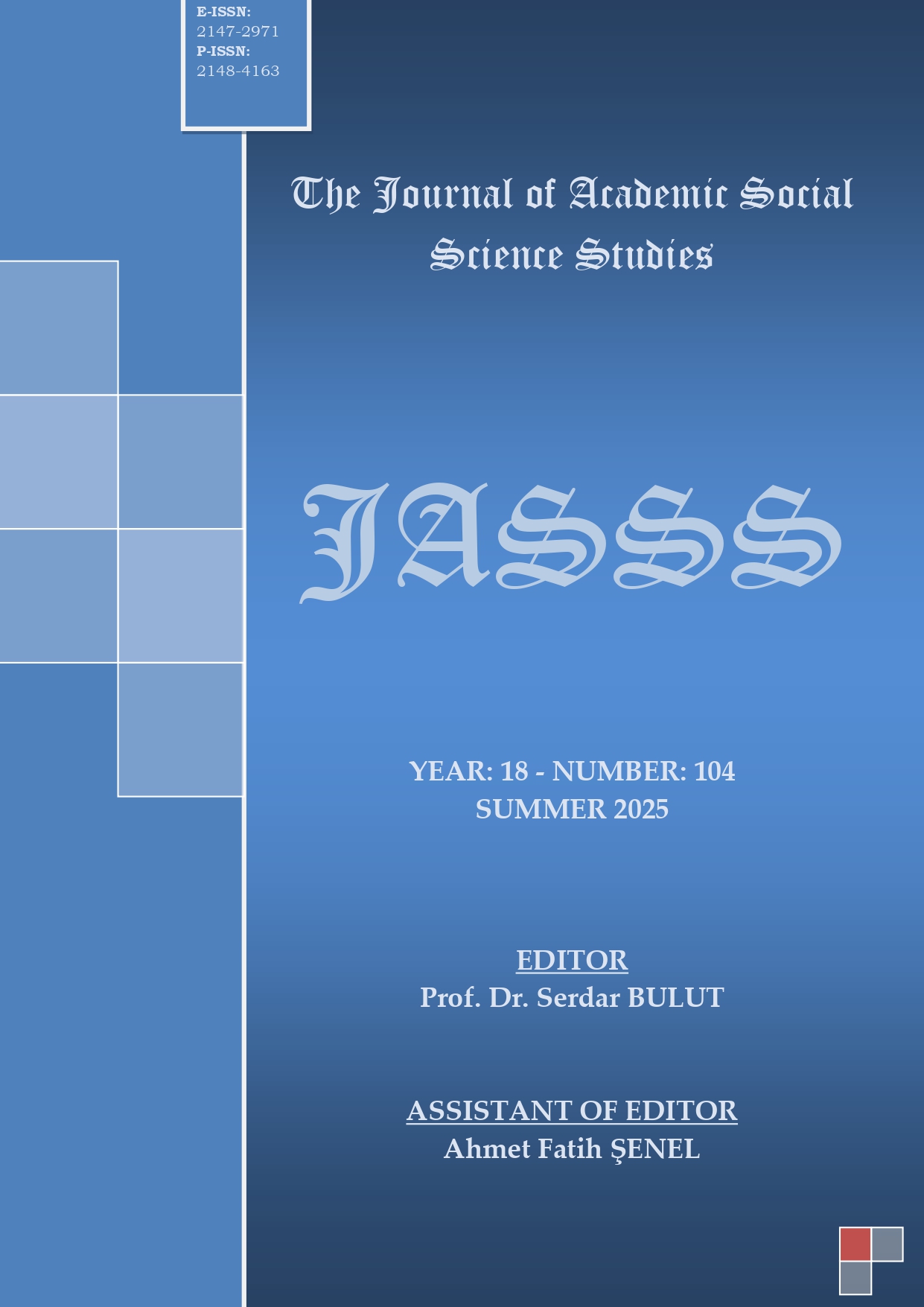Author :
Abstract
Sanat pratikleri arasında var olan sanat alanlarının keskin sınırlarının kırılarak esneklik kazanması ile sanatlar arası etkileşimler başlamıştır. İlkel çağlardan beri var olan sanat formlarının geleneksel yapılarının eriyerek farklı alanlarla iş birliği içinde olması sanata yeni bir boyut ve modernlik kazandırmıştır. Farklı disiplinlerin bir yüzeyde buluşup yaratım sürecini oluşturması sanatta sonsuz ifade biçimlerini doğurmuş bu sayede sanatta disiplinler arası yaklaşımlar ile sanat artık dinamik ve eklektik bir yapıya sahip olmuştur. Dadaizm akımı ile başlayan hazır nesne kullanımları Plastik Sanatların dönüşümünü hızlandırmış ve içerik anlamında da değişikliklere uğratmıştır. Plastik sanat alanlarında üretilen yapıtların estetik kaygılardan ziyade bir mesaj iletme çabası sanatta kavramsalı oluşturmuş ve bu sayede sanatçının farklı metodoloji ve entegrasyonları benimsemesi kolaylaşmıştır. Bu süreçte sanatçının özgürlüğü malzeme kullanımında, yeni teknikler geliştirmesinde, teknolojinin olanaklarından yararlanmasında, mekân ve izleyici olgularında belirginleşmiş ve bu sınırsızlık eserin oluşum olanaklarını genişletmiştir. Sanatçılar, estetik beğenilere dayalı geleneksel yaklaşımların ötesine geçerek, eserlerinde entelektüel ve bilişsel yönelimlere odaklanmaya başlamışlardır. Bu dönüşüm, izleyiciyi yalnızca algılayan bir özne olmaktan çıkarıp, sanatın sergilenme ve oluşum süreçlerine etkin biçimde katılan bir aktöre dönüştürmüştür. Bu bağlamda, sanatçılar mekânın işlevini yeniden tanımlayarak onu yalnızca bir sergileme ortamı olarak değil, sanat eserinin bütünleyici bir unsuru olarak ele almış; böylece sergileme pratiklerinde mekânsal sınırları aşan deneysel yaklaşımlar geliştirmişlerdir. Bu araştırmada, çağdaş sanatın geçirdiği dönüşüm çerçevesinde plastik sanatlar alanındaki disiplinler arası etkileşimler incelenmiştir. Belirlenen tematik bir odak etrafında geliştirilen çalışmalar aracılığıyla, plastik sanatlar alanında mevcut olan etkileşimlerin, sanatsal pratiklerin ve temaların çağdaş sanat bağlamında geleneksel anlamlarını yitirmeksizin yeniden üretilebileceği ortaya konulmuştur. Farklı plastik sanat disiplinlerinin bir arada kullanımı, bu alanlar arasındaki keskin sınırların giderek erdiğini ve eklektik bir yapının oluştuğunu kanıtlamaktadır. Bu çalışma, sanatsal üretim süreçlerinin; geleneksel, kavramsal ve dijital bağlamların bir araya getirilmesiyle plastik sanatlarda nasıl ve hangi yönlerde yeni anlatım biçimleri oluşturabileceğini göstermesi bakımından model niteliği taşımaktadır.
Keywords
Abstract
With the dissolution of the rigid boundaries between existing art fields within artistic practices and the resulting flexibility, interactions between different art disciplines have begun to emerge. The traditional structures of art forms, which have existed since primitive times, have melted away through collaboration with various fields, bringing a new dimension and modernity to art. The convergence of different disciplines on a single surface to form a creative process has led to infinite forms of expression in art. Thus, through interdisciplinary approaches, art has gained a dynamic and eclectic structure. The use of ready-made objects that began with the Dadaist movement accelerated the transformation of Plastic Arts and led to significant changes in terms of content. The emphasis in plastic art productions has shifted from aesthetic concerns to the desire to convey a message, thereby laying the foundation for conceptual art and facilitating the artist's adoption of various methodologies and integrations. In this process, the artist's freedom has become evident in material use, the development of new techniques, the utilization of technological possibilities, and the reconsideration of space and the viewer. This sense of boundlessness has expanded the possibilities for the formation of an artwork. Artists have begun to move beyond traditional approaches based on aesthetic preferences and instead focus on intellectual and cognitive orientations in their works. This transformation has redefined the viewer from a passive observer into an active participant in the processes of displaying and forming art. In this context, artists have redefined the function of space—not merely as an exhibition site but as an integral element of the artwork—thus developing experimental approaches that transcend spatial limitations in exhibition practices.In this research, interdisciplinary interactions within the field of plastic arts have been examined in the framework of the transformation experienced in contemporary art. Through works developed around a specific thematic focus, it has been demonstrated that existing interactions, artistic practices, and themes in the field of plastic arts can be reproduced in the context of contemporary art without losing their traditional meanings. The combined use of different plastic art disciplines proves that the sharp boundaries between these areas are gradually fading, forming an eclectic structure.This study serves as a model in showing how new forms of expression in plastic arts can be created through the combination of traditional, conceptual, and digital contexts in artistic production processes.





